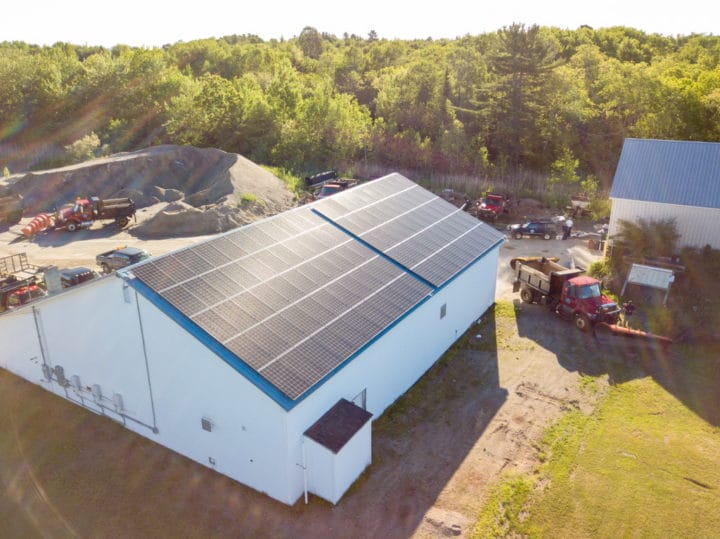Per the EIA, 3/4 of Maine’s electricity come from renewable sources: 1/3 from hydroelectricity, 1/4 from biomass, and 1/5 from wind. Though the CO2 aspects of the biomass can be debated, hydro and wind make up more than 50% and that’s pretty clean. And so it could be argue that the quaint amounts of solar power generated in Maine – less than 1% of total electricity – are in fact respectable for the northernmost New England state.
Solar power generation has expanded though – growing almost 300% from 13 GWh of generation in 2014, to 51 GWh in 2017: including the state’s first EIA noted utility scale generation of 10 GWh. There are two utility scale solar photovoltaic plants noted in the EIA 860M report, preliminary monthly electric generator inventory – 1.5 and 4.1 MW-AC. The state’s one large energy storage system – a 16 MWh facility operated by NextEra – is coupled with an petroleum-fired power plant.
Maine’s governor has vetoed several legislative efforts to support solar power. And like President Trump, Governor LePage (R) has made his opinions clear via Twitter.

But Governor LePage – who won with less than half the votes in a three-way race – does not control everything that goes on in Maine. As evidence of this, recently a massive 100 MW solar project was proposed, which represents more than double the entire capacity installed in the state right now. And some reports suggest the state installed 19 MW of solar power overall, many times greater than the 3 MW in 2016 – and almost triple the 7 GW in 2015.
Recent coverage by the Bangor Daily News found rising distributed installation numbers, including 25 municipal systems having been installed. pv magazine covered the state’s largest municipal system as of October 2017, while New England’s largest plant overall, a 9.9 MW-AC in Pittsfield,has come online since – photo below.

And complementing the middle-sized municipality growth, are groups like A Climate to Thrive on Mount Desert Island. They’re pushing for their community to be energy independent by 2030 and, in the short term – on Saturday, August 4 – have a goal of getting residential approval for all town buildings and the school to buy solar power from a larger solar project in Tremont.
The group says they’ve helped install 76 new arrays on the island in the past 2 and a half years. The groups says their work has doubled the island’s electricity capacity, and they hope to do it again in 2019 and 2020.
Energy democracy is coming from the ground up in Maine.
This content is protected by copyright and may not be reused. If you want to cooperate with us and would like to reuse some of our content, please contact: editors@pv-magazine.com.








By submitting this form you agree to pv magazine using your data for the purposes of publishing your comment.
Your personal data will only be disclosed or otherwise transmitted to third parties for the purposes of spam filtering or if this is necessary for technical maintenance of the website. Any other transfer to third parties will not take place unless this is justified on the basis of applicable data protection regulations or if pv magazine is legally obliged to do so.
You may revoke this consent at any time with effect for the future, in which case your personal data will be deleted immediately. Otherwise, your data will be deleted if pv magazine has processed your request or the purpose of data storage is fulfilled.
Further information on data privacy can be found in our Data Protection Policy.